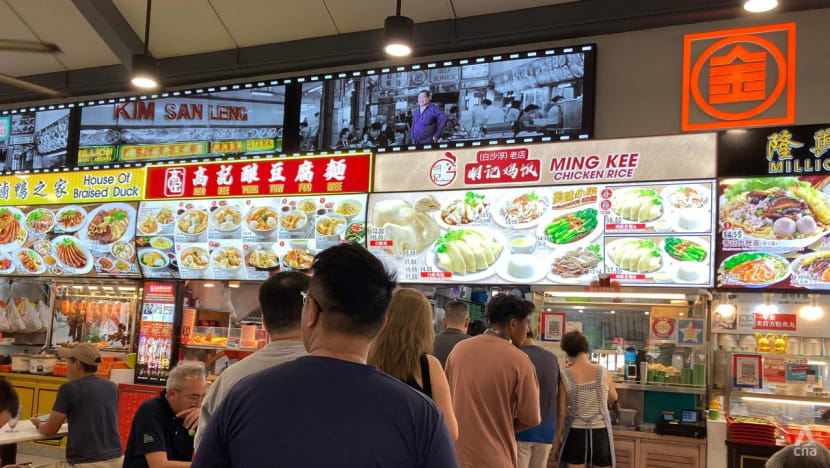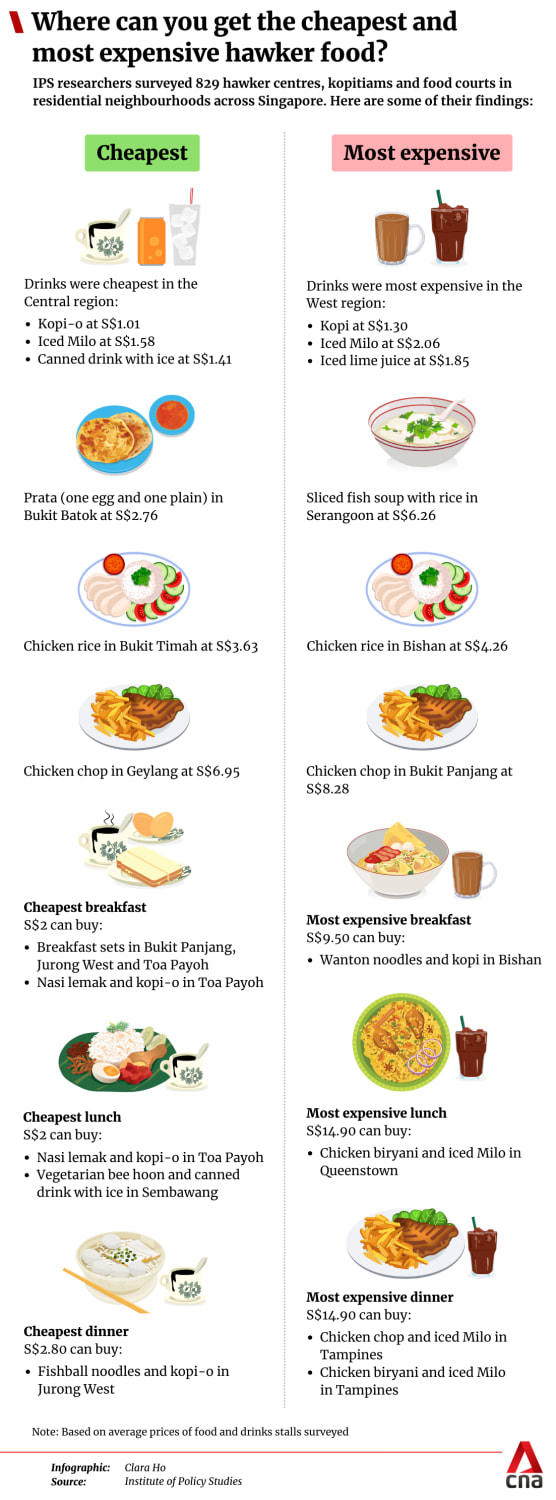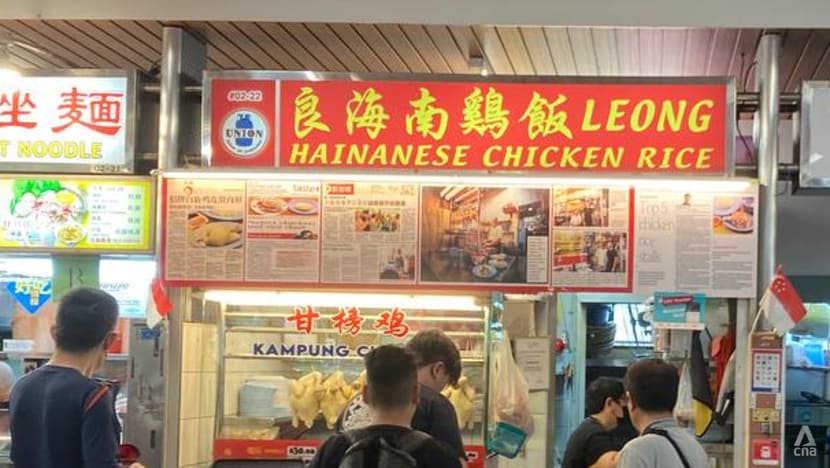Chicken rice not more expensive in Bishan, hawkers say in response to price comparison study
The average price of chicken rice in Bishan is S$4.26, compared with the national average of S$3.80, according to the Institute of Policy Studies.

Ming Kee Chicken Rice at Bishan Street 13. (Photo: CNA/Abigail Ng)
SINGAPORE: Chicken rice sellers in Bishan were surprised by the results of a study that said the dish is priciest in their neighbourhood compared with other areas in Singapore.
The study by the Institute of Policy Studies (IPS) found that the average price of chicken rice in Bishan was S$4.26 (US$3.15), compared with the national average of S$3.80. Researchers visited hawker centres, food courts and coffee shops in 26 residential neighbourhoods in Singapore.
“I was shocked, but I cannot judge,” said a Charcoal Master manager, who only wanted to be known as Ms Chong. The brand operates 10 food stalls across the country, including one in Bishan, and all outlets charge S$3.50 for a basic plate of chicken rice.
“In this industry, everyone has different suppliers. I don’t know about their rent and other expenses,” she said in Mandarin.
The IPS survey found that the most common price of chicken rice in Singapore was S$3.50 per plate.

Mr Terence Lim, founder of Qi Le Boneless Chicken Rice, was also surprised that prices are higher in Bishan compared with other neighbourhoods.
Qi Le also operates in Ang Mo Kio and Yishun, and each plate costs S$4.50. “There’s an overall increase (in operational costs), it’s not because of Bishan,” he said.
Ms Joan Lee, stall owner of Ming Kee Chicken Rice, said rent is likely more expensive in central locations, but that she expected food prices in Bishan to be similar to that of other residential hubs such as Toa Payoh and Ang Mo Kio.
“Location definitely plays a big part (because) a big chunk of overhead costs comes from rent,” she said.
QUALITY AND QUANTITY
Some chicken rice sellers pointed to the ingredients they use or the size of the portions they serve when asked about their prices being above the average in Singapore.
“When comparing prices, often they analyse the prices and do not take note of quantity or quality of the food,” said Ms Lee.
Ming Kee Chicken Rice serves its chicken on a separate plate from the rice. “More economical chicken rice usually have their meat served on the rice, so (the) meat portion is lesser,” she said.
Mr Neo Cheng Leong, who runs Leong Hainanese Chicken Rice, also said stalls that charge less probably serve smaller portions.
“I could also do that, serve thinner pieces of meat,” he said in Mandarin.
“Look at the thick slices of chicken, is S$4.50 expensive for this?” he said while showing CNA an order he packed for a customer. “If my customers are happy, I have peace of mind to sell it at this price.”

Mr Neo also said that he uses fresh kampung chicken which costs more than S$8 a kilogram, while he estimates that regular broiler chicken or frozen meat is S$4 to S$5 a kilogram.
“The quality is different,” he said, adding that he thinks other shops that use kampung chicken are likely to charge S$5 per plate.
HIGHER COSTS
Several hawkers also told CNA that the cost of chicken increased significantly even after Malaysia’s temporary export ban was lifted, and rattled off a list of other costs that had gone up – from gas for cooking, to garlic and onion and even the takeaway containers.
Mr Lim of Qi Le said everything has become more expensive. “My margin is already lower, I can’t be charging S$8 or S$10 for a plate.”
He said the price of S$4.50 is what he thinks is reasonable, and is at a level that customers can accept and allows the business to continue functioning.
Madam Tan Lay Hiok, stall owner of Lian Kee Roasted Chicken Rice which sells each plate for S$4, pointed to higher costs for ingredients in general.
“A small increase for garlic, a small increase for eggs, it all adds up,” she said in Mandarin.
Ms Chong of Charcoal Master said the company absorbed the increase in costs for now and is in discussions with suppliers, but may have to raise prices if raw material costs stay high.
CHEAPER IN BUKIT TIMAH?
The IPS study found that Bukit Timah had the cheapest average price of chicken rice at S$3.63, though researchers highlighted the low number of stalls and small range of prices.
No food courts in Bukit Timah were surveyed, and food courts generally charge more.
Two stalls in Bukit Timah Market charge S$4 per plate. Seng Heng Hainanese Boneless Chicken Rice, which had a long queue at lunchtime when CNA visited, raised prices by S$1 after Malaysia’s export ban.
The owner, who only wanted to be known as Mr Lee, also said water and electricity costs have risen.
Ho Kee Hong Kong Roasted Delight, also in Bukit Timah Market, charges S$3.50 for chicken rice.
Its owner Tan Ah Long said he can keep costs lower because he runs the stall himself and rent is not expensive in the hawker centre.
“If I raise prices, I might have fewer customers. It’s more stable to keep prices the same,” he said.
“I don’t want to give my customers stress, a lot of them are students,” he added.
















